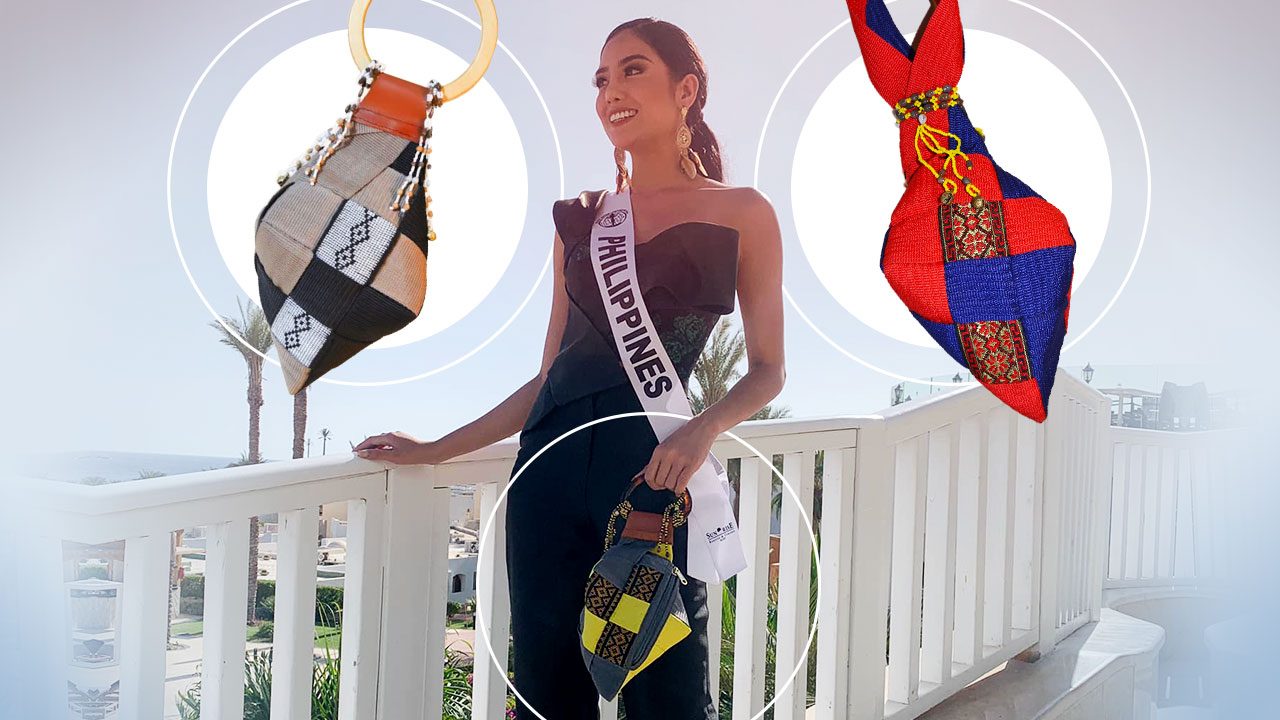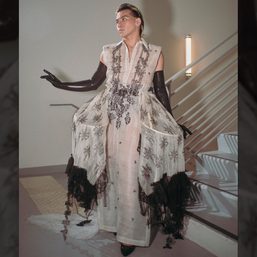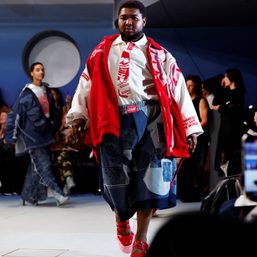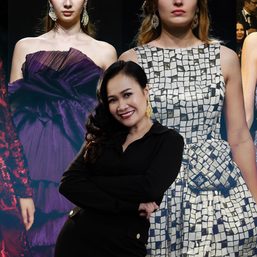SUMMARY
This is AI generated summarization, which may have errors. For context, always refer to the full article.

CAGAYAN DE ORO, Philippines – A Kagay-anon artist has taken the pusô – the ubiquitous, heart-shaped pouch of rice sold on the streets of the Southern Philippines – and transformed it into a wearable objet d’art.
Artist Oscar Esteban Floirendo took his inspiration from the intricately woven packaging of the pusô, which comes in octahedral, diamond, or rectangular shapes, and various other complex forms.
“I am drawn to the process of how it is formed and how ‘Pinoy’ it is, as it is used prevalently by common folk in the Visayas and Mindanao,” the University of the Philippines Fine Arts graduate shared. “As an artist and aspiring designer, I began to look for ways to incorporate this fascination into a main element for my designs.”
Upon further studying the pusô’s intricate weaving, Floirendo was reminded that leaf-weaving was an ancient Filipino skill used for many traditional handicrafts, such as baskets, hats, mats, toys, sidings, and even religious decorations.

He originally planned to make a pusô lamp, but when he found out that this was already commonplace, he opted to design a bag instead. His first bag, the “Pusông Pinoy,” was named after the colors of the Filipino flag, while the second bag, “Zenaida,” was named after his late mom.
“I did my research and found out there were many forms of pusô using different weaving techniques. I still settled for its most common, recognizable form, which most closely resembles the heart after which it was named. I studied the actual process of how to weave it using two strips of coco leaves,” he shared.
After many trials and errors, he discovered that the width of the straps would actually determine the size of the bag. He settled on a 1.5″ to 2″ width to come up with medium and large sized pusô bags. He used premium colored nylon straps accented with Meranao woven langkit and Matigsalug-Manobo behek beadworks for harmonious and truly Pinoy designs.
According to JC Salon, Floirendo’s former co-worker at the Museo de Oro, the behek is a simple neck ornament of the Matigsalug-Manobo tribe of Bukidnon, usually made from chalk or glass beads, although they could also be made from other materials such as keleb or li-us (river seeds), bone or tooth enamel, wood, clay, or metal. It is Salon himself who supplies Floirendo with the beadworks.
Meanwhile, the langkit – bands of woven tapestry – are sourced from Ifah Ziya’s Langkit in Marawi City; Ziya heads a collective of Meranao women who do langkit weaving. Each langkit consists of three to four colors with okir designs: scrolls, leaves, or vine motifs woven in abstract forms.

Besides crafting bags, Floirendo is a visual artist currently serving as acting head of the Xavier University Center for Culture and the Arts (XCCA) and curator of the university’s Museo de Oro.
“My works are often mixed media and process driven, revolving around social and contemporary commentaries,” he shared. “As an artist, one must continue to strive to evolve and improve, seek new learnings, and learn new skill sets.”
Floirendo has also crafted toys for his son, wine holders which defy gravity, and various handicrafts based on the motorela, Cagayan de Oro’s iconic tricycle – originally invented by his late father Rafael in 1967. – Rappler.com
Add a comment
How does this make you feel?










There are no comments yet. Add your comment to start the conversation.